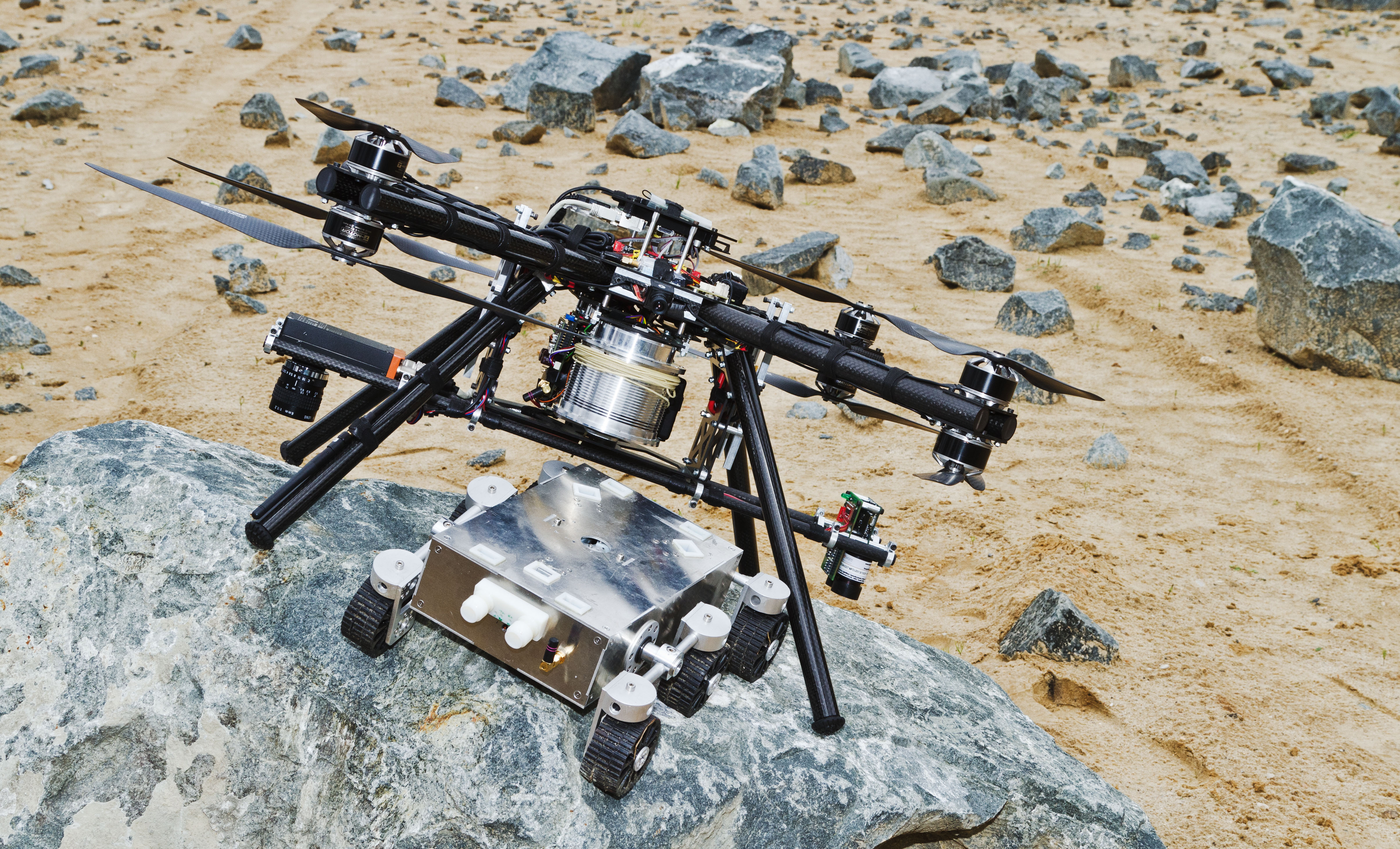How do you land a machine on the Red Planet? Appears that the answer keeps changing as engineers get smarter about solving the problem.
Over the years, NASA has experimented with approaches ranging from soft landings to inflatable airbags to the famous “Sky Crane” that landed Curiosity on Mars in 2012. And in this video above, you can see the European Space Agency taking the sky crane idea a little further in prototype testing.
“Starting from scratch for the eight-month project, the Dropter team was challenged to produce vision-based navigation and hazard detection and avoidance for the dropship,” the European Space Agency stated. “It has to identify a safe landing site and height before winching down its passenger rover on a set of cables.”
As you can see in the video, the dropship flew as high as 56 feet (17 meters), began lowering the rover around 33 feet (10 meters), and then lowered the rover until the little machine touched the ground.


Interesting concept for Earth Landings.
My only question is how could a propeller based skycrane work for Mars with an atmospheric density around 10% that of Earth’s?
Although possibly propellers could work, I doubt they could create enough lift in Mar’s thin atmosphere to carry much payload weight (hence only light gliders have been proposed in past for Mars aerial exploration)… Thoughts anyone?
In 2001, a NASA built, solar powered propeller aircraft named Helios HP01 flew up to 96,863 feet (28,524 m) above sea level, probably at a leisurely speed of 30.6 to 43.5 km/h. It was essentially a flying, solar powered wing. The air-pressure at that altitude, according to a nifty pressure altitude calculator, is 1067 pascals. The average Martian pressure is said to be 600 pascals. However the lowest places on Mars slightly exceed 1 kpa. On the bright side, Mars has less gravity, so any craft would weight 1/3rd as much as it does on Earth and have an easier time staying aloft. In principle, a propeller driven plane could fly on Mars.
When it comes to helicopters or quad copters, that gets a little tricky, the highest helicopter flight is said to be at 40,820 feet and couldn’t climb any higher since the engine flamed out, perhaps due to the very low oxygen environment. I’d imagine this could be accomplished by designing a battery powered drone with very large blades. Such a craft could be tested from a stratospheric balloon and have it perform maneuvers around it for a couple minutes. It’s never been done before, but there’s only one way to find out…
That said, this quad-copter rover test is likely intended as an analogue for a rocket powered descent system. Though skycranes are often used to construct high voltage power lines, seen in this video.
One wonders why we need a skycrane at all. Why doesn’t the vehicle just land on the surface and simply let the rover drove out from under it?
The beauty of skycrane is the utilization of the rover’s own wheels as landing gear. Without a sky crane, the propulsion module would need its own landing legs to support itself, increasing the payload’s mass and deployment complexity. To make mattes worse, the propulsion module would need to be high above the ground to give the rover enough clearance to rove out, creating a top-heavy lander that could tilt and then tumble on an incline. The same scenario happens when the rover is on-top, as well. The sky crane design avoids these problems, giving a very stable landing platform and reduced mass. This video seems to indicate that Europe is recognizing those benefits for their own future rover, too.
Mars is 0.6% of earths atmospheric pressure.
I remember reading that for a normal earth plane to stay in the air on mars it need to be traveling at hyper-sonic velocities.
I don’t see how a rota copter could work without having supersonic rotating blades.
(at which point I wonder what the blades are going to be made of)